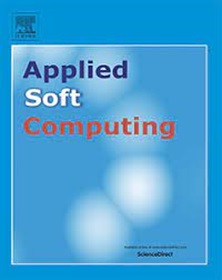A coupled zeroing neural network for removing mixed noises in solving time-varying problems
IF 7.2
1区 计算机科学
Q1 COMPUTER SCIENCE, ARTIFICIAL INTELLIGENCE
引用次数: 0
Abstract
Harmonic noise frequently arouses by the disturbances in industrial applications, which would be a great threat to the security, stability and service life of equipment in some large and critical facilities, especially in power systems. Therefore, finding a way to resist harmonic noise is highly important. The zeroing neural networks (ZNN) have lately gained exceptional success in solving time-varying problems (TVP) as a result of its efficiency. Inspired by the effectiveness of ZNN and the dynamic system model design principles in control theory, we initially develop a coupled anti-mixed noise ZNN (AMNZNN) model that can resist the combination of single harmonic and non-harmonic noise (e.g., random noise). Then, an extended AMZNN model is further designed to remove the combination of multi-harmonic noise and non-harmonic noise. Additionally, comparisons among original ZNN (OZNN), integration-enhanced ZNN (IEZNN), harmonic-noise-tolerant ZNN (HNTZNN) and the proposed AMNZNN for time-varying matrix inversion (TVMI) under the mixture of harmonic noise and random noise are experimented to demonstrate the proposed AMNZNN model’s superior ability in resisting mixed noise. Finally, by applying the proposed extended formalism to power systems and microphone arrays in denoising, the effectiveness of the proposed method to resist multi-harmonic and random noises is further verified in scientific applications.
求助全文
约1分钟内获得全文
求助全文
来源期刊

Applied Soft Computing
工程技术-计算机:跨学科应用
CiteScore
15.80
自引率
6.90%
发文量
874
审稿时长
10.9 months
期刊介绍:
Applied Soft Computing is an international journal promoting an integrated view of soft computing to solve real life problems.The focus is to publish the highest quality research in application and convergence of the areas of Fuzzy Logic, Neural Networks, Evolutionary Computing, Rough Sets and other similar techniques to address real world complexities.
Applied Soft Computing is a rolling publication: articles are published as soon as the editor-in-chief has accepted them. Therefore, the web site will continuously be updated with new articles and the publication time will be short.
 求助内容:
求助内容: 应助结果提醒方式:
应助结果提醒方式:


